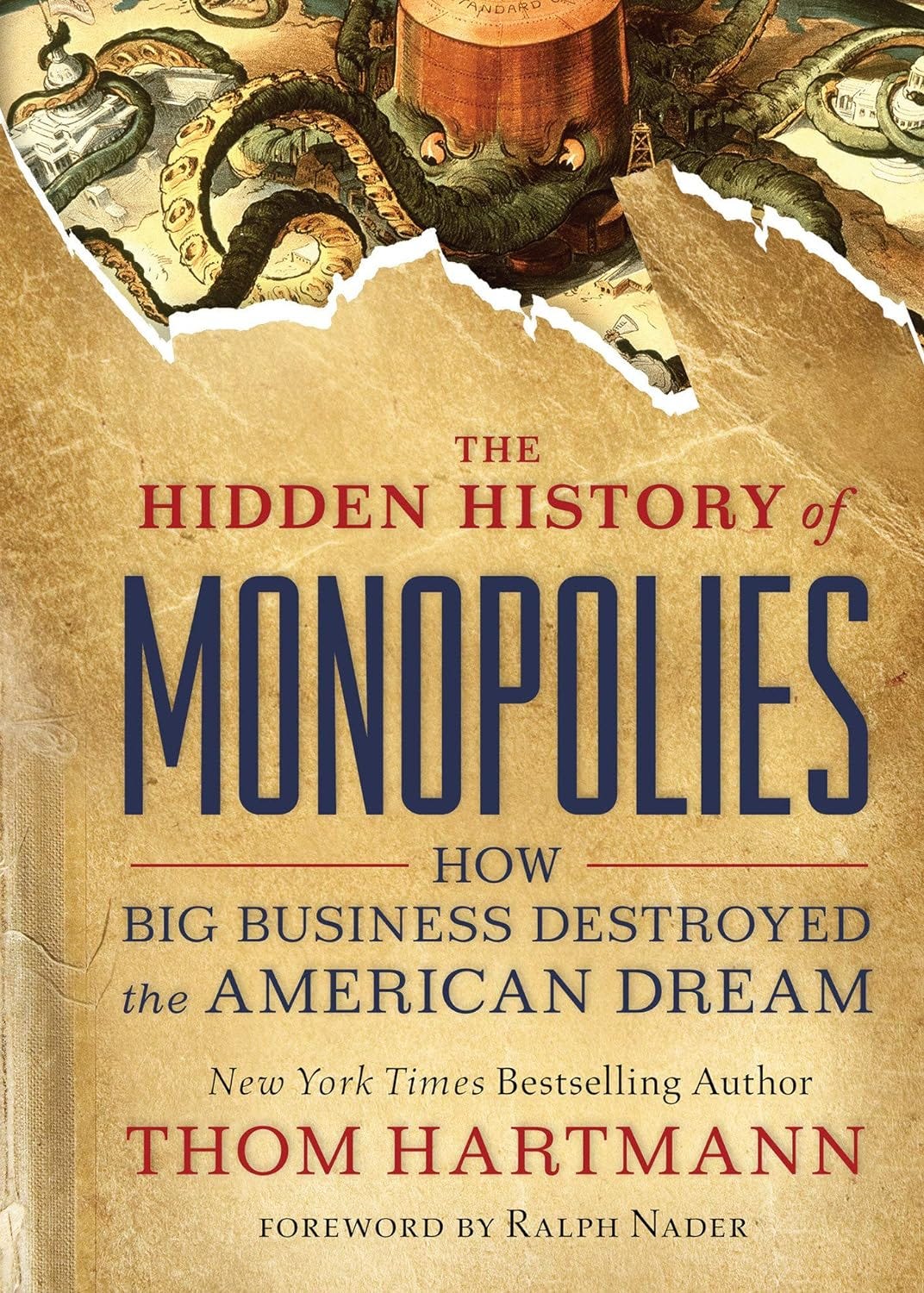Reaganomics Ensured American Leisure for the Few, Not the Many
The Hidden History of Monopolies: How Big Business Destroyed the American Dream

Reaganomics Ensured American Leisure for the Few, Not the Many
As productivity continued to rise, due to increasing automation and better technology, so too would everyone’s wages. Or so went the theory.
The glue holding this logic together was the then-top marginal income tax rate. In 1963, just before the Time article was written, the top marginal income tax rate was 90%. What that did was encourage CEOs to keep more money in their businesses: to invest in new technology, to pay their workers more, to hire new workers and expand.
After all, what’s the point of sucking millions and millions of dollars out of your business if it’s going to be taxed at 90% (or even the 74% that President Lyndon Johnson lowered it to in 1966)?
According to this line of reasoning, if businesses were suddenly to become way more profitable and efficient thanks to automation, then that money would flow throughout the business—raising everyone’s standard of living and increasing everyone’s leisure time, from the CEO to the janitor.
But when Reagan dropped that top tax rate down to 28%, everything changed. Now, as businesses became far more profitable, there was a far greater incentive for CEOs to pull those profits out of the company and pocket them, because they were suddenly paying an incredibly low tax rate.
And that’s exactly what they did.
All those new profits, thanks to automation, that were supposed to go to everyone, giving us all bigger paychecks and more time off, went to the top.
Suddenly, the symmetry in the productivity/wages chart broke down. Productivity continued increasing, since technology continued improving, and revenues and profits kept increasing with it.
But wages stayed flat.
And, again, since greater and greater profits could be sucked out of the company and taxed at lower levels, there was no incentive to reduce the number of hours everyone had to work.
In the 1950s, before that Time magazine article predicting the Leisure Society was written, the average American working in manufacturing put in about 42 hours of work a week. Today, the average American working in manufacturing puts in about 40 hours of work a week. This means that even though productivity has increased 400% since 1950, Americans in manufacturing are working, on average, only two fewer hours a week.
If productivity is four times higher today than in 1950, then Americans should be able to work four times less, or just 10 hours a week, to afford the same 1950s lifestyle when a family of four could get by on just one paycheck, own a home, own a car, put their kids through school, take a vacation every now and then, and retire comfortably.
That’s the definition of the Leisure Society: 10 hours of work a week, and the rest of the time spent with family, with travel, with creativity, with whatever you want. And if our tax laws and our corporate anti-monopoly laws that restrained the worst corporate bad behavior had stayed the same as they were in 1966, we might well be either working 10 hours a week for around $50,000 a year in income, or working 40-hour weeks for over $200,000 a year.
But all of this was washed away by the Reagan tax cuts. Those trillions of dollars that would have gone to workers? They went into the estates and stock portfolios of the top 1%. Combine this with Reagan’s brutal crackdown on striking PATCO (Professional Air Traffic Controllers Organization) members that kicked off a three-decades-long assault on another substantial pillar of the middle class—organized labor—and life today is anything but leisurely for working people in America.
More Unequal than Rome
Instead of leisure, working people got feudalism.
From 1947 to 1981, all classes of Americans saw their incomes grow together; as a result of the Reagan tax cuts, that era ended and a new era of Reaganomics began. Since then, only the wealthiest among us have gotten rich from economic boom times.
Today, workers’ wages as a percentage of GDP are at an all-time low. Yet, corporate profits as a percentage of GDP are at an all-time high.
The top 1% of Americans own 40% of the nation’s wealth. In fact, just 4 Americans own more wealth than 150 million other Americans combined, and they pay lower taxes than anybody in the bottom half of American families economically.30
Walmart, Inc., the world’s largest private employer, personifies this inequality best. It’s a corporation that in 2011 gained more revenue than any other corporation in America. It raked in $16.4 billion in profits. It pays its employees minimum wage.
And the Walmart heirs, the Walton family, who occupy positions six through nine on the Forbes 400 Richest Americans list, own roughly $100 billion in wealth, which is more than the bottom 40% of Americans combined. The average Walmart employee would have to work 76 million 40-hour weeks to have as much wealth as one Walmart heir.
Through some interesting historical analysis, historians Walter Scheidel and Steven Friesen calculated that inequality in America today is worse than what was seen during the Roman era.31 Thus the top 1%, just like the Roman emperors, got their Leisure Society, and they’ve used their financial power to capture the US government to protect their Leisure Society.


